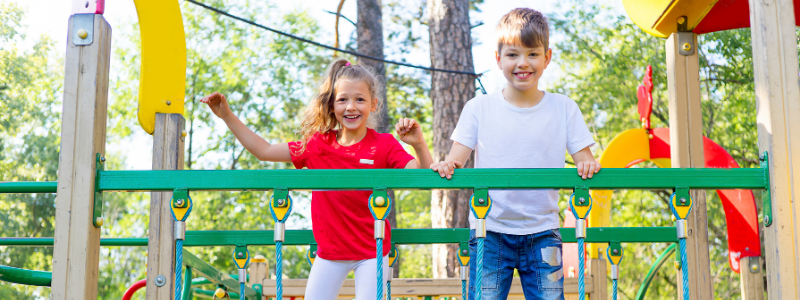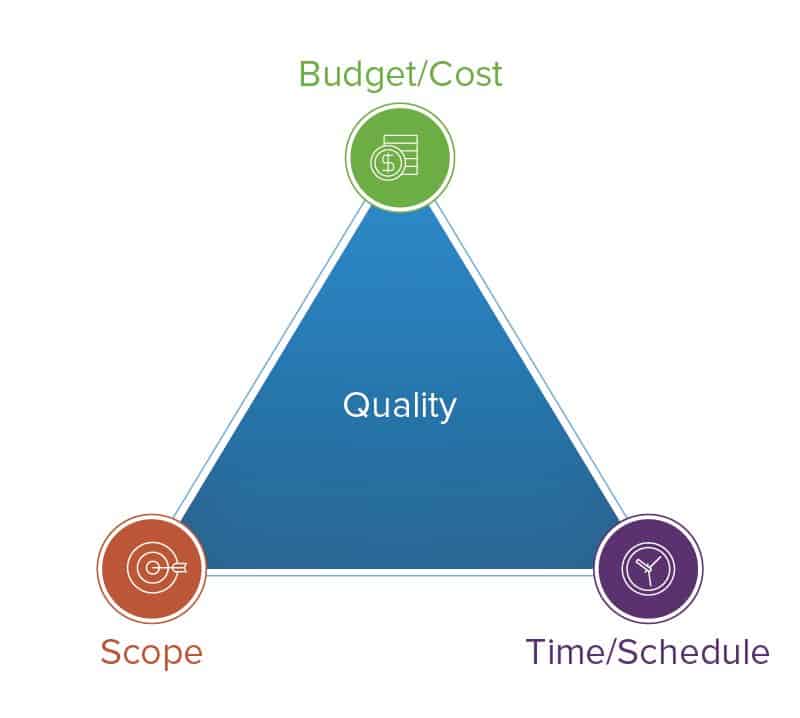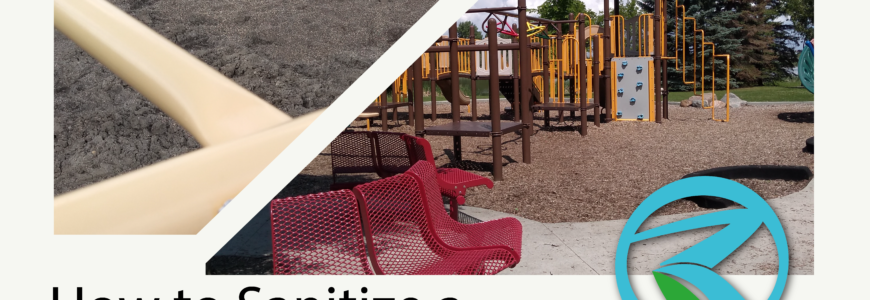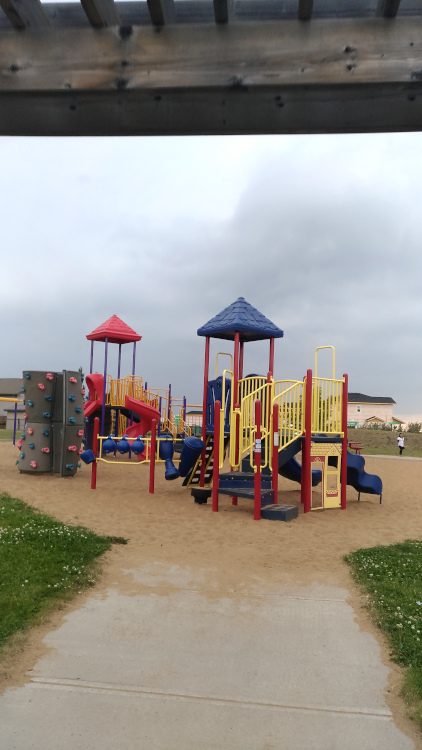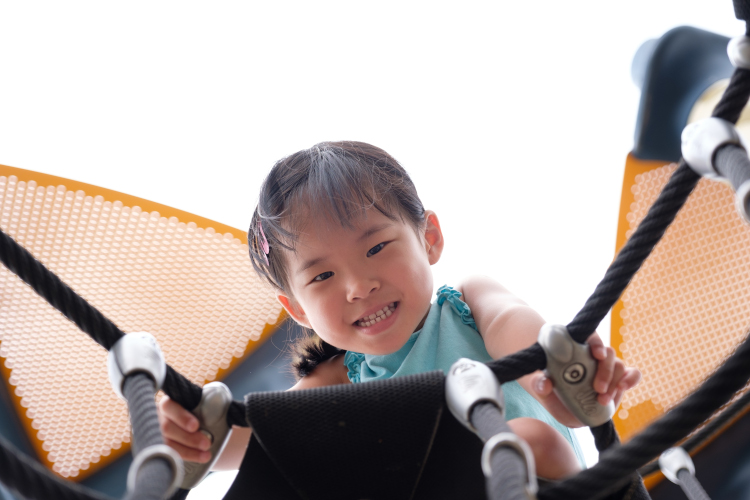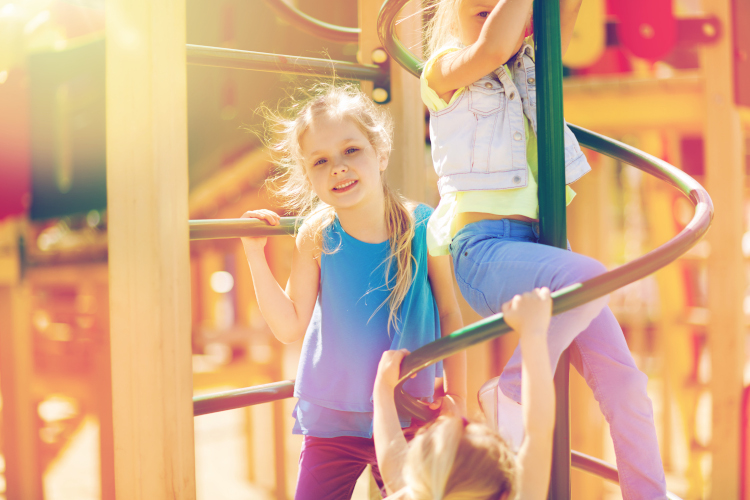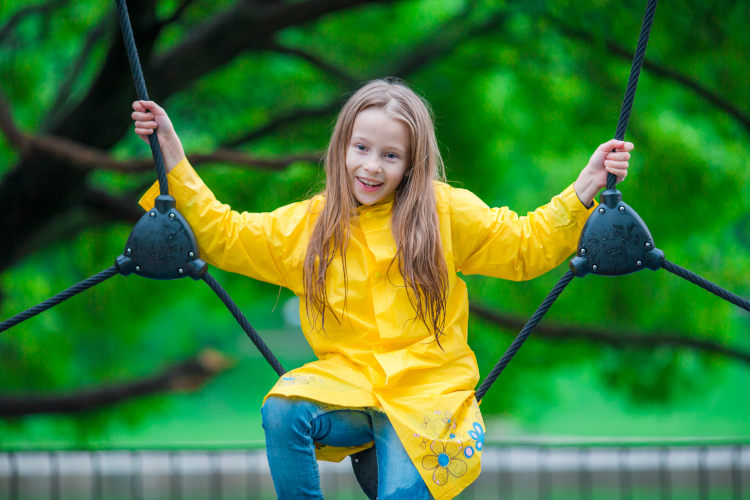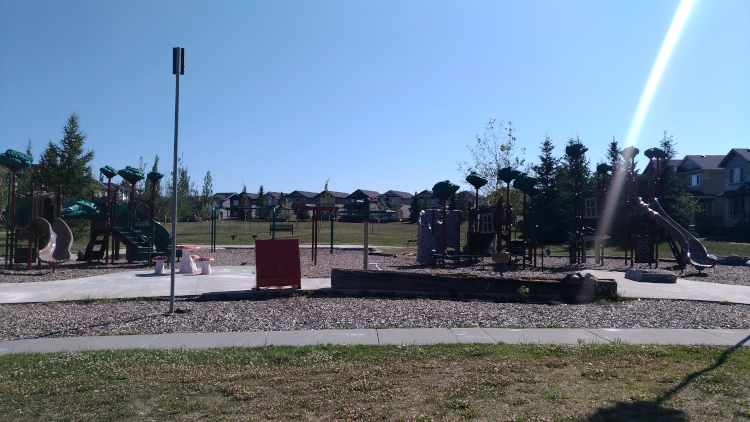Each year, more than 200,000 kids visit hospital emergency rooms for playground-related injuries. Learn what to look for in playground design and equipment and how to teach your kids about playing safely.
Inspect Playground Design and Equipment
- Select age-appropriate play equipment. Because sizes and proportions differ, playground equipment should be suited to your child’s age, whether they’re toddlers or school age. Designating separate areas keeps everyone safer. Use playground equipment that is good for your child’s age and that your child can reach and climb on their own. Preschool-age children and school-age children need different types of playground equipment.
- Look for absorbent surfaces. Absorbent surfaces reduce injuries from falls. You want soft materials that will cushion an impact. Some of the best options are loosely packed wood chips, mulch, pea gravel, and sand or synthetics like rubber mats.
- Ensure the equipment is well maintained. All equipment should be anchored into the ground firmly, and nuts and bolts should be tight and covered. Beware of rusted metals, splintering wood or any jagged edges or open hooks that could catch on clothing.
- Calculate safe spacing. Allowing for plenty of clearance will reduce accidents. See that swings are at least 2 feet apart and 6 feet away from any wall or fence. All platforms should be less than 12 feet high.
- Take special care with moving equipment. Equipment with moving parts, like seesaws and carousels, belong in separate areas of the playground. Be vigilant around pinch points where a child’s fingers can catch.
- Don’t wear scarves, clothing with drawstrings or other cords, helmets. These items of clothing can cause choking if they get wrapped around a child’s neck.
- Check the playground for any loose parts of playground equipment, strong handrails and barriers, broken pieces of glass, or other sharp objects before letting your child play.
- Report safety concerns to the appropriate authority. Familiarize yourself with whoever handles the playground’s upkeep, whether it’s a local government, school or private organization. If you see a hazard, warn others to keep away and report the issue immediately.
Teach Your Kids How to Play Safely
- Actively supervise your child by staying close enough, enabling you to take action if needed.
- Require kids to use the equipment as intended. Even well-designed equipment needs some cooperation from the user. Show kids how to stay inside the guardrails, use the slide feet first, and sit facing each other on seesaws. Many devices are built for one kid at a time, so keep it that way.
- Point out safety features. Help kids understand the importance of guardrails and protective barriers on elevated platforms and ramps. Discuss how the hood on a slide reminds you to sit down and plastic slides stay cooler than the metal versions.
- Encourage caution when climbing. Falling causes almost 70% of playground injuries, so climbing merits special attention. Practice falling so your kids learn to land on both feet with their knees bent. Using both hands and keeping far behind the person in front of you are also important measures.
- Rule out roughhousing. Use your playground outings to show the benefits of taking turns and sharing. Discourage shoving, pushing or fighting.
- Enforce safe distances. Praise your kids for being observant of their surroundings and standing back from any equipment when it’s in use. Make it a habit to check that there are no other kids at the bottom of the slide before descending. Pick a path that creates a wide berth between you and the swing set.
Keeping your kids safe on the playground will let them enjoy the fresh air and fun with less risk of injury. Playing alongside your kids is a great way to check out their play areas, provide adequate supervision, and share the good times.

